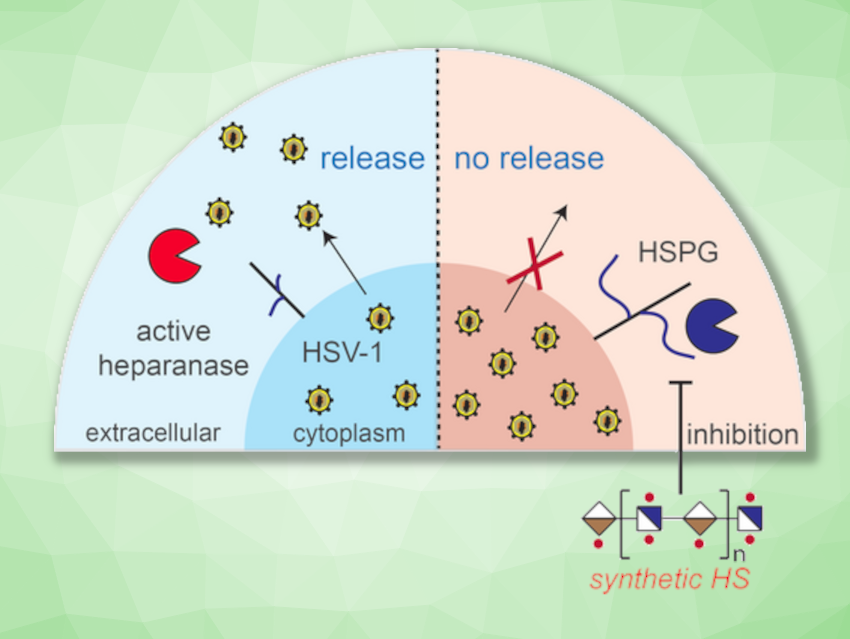Herpes is not only unpleasant but it can, in some cases, also have dangerous complications and life-threatening consequences. Deepak Shukla, University of Illinois at Chicago, USA, Geert-Jan Boons, University of Georgia, Athens, USA, and Utrecht University, The Netherlands, and colleagues have introduced a completely new approach for treating herpes. Their method is based on the inhibition of an enzyme that is needed for the release of newly formed virus particles from infected cells.
The Herpes Simplex Virus
Just before an important interview or anticipated first date—always when you least need it—you feel a tingling and itching on your lip. A glance in the mirror reveals the first little blisters: herpes is back. The majority of adults carry the instigator in their bodies because, once infected, herpes simplex Type 1 viruses (HSV-1) settle into nerve ganglia. They remain in the body throughout a person’s life, inactive most of the time. If the immune system is temporarily weakened, maybe by anxiety or stress, too much sunlight, hormonal fluctuations, or a cold, an outbreak may occur. This is annoying and painful but usually harmless.
However, this is not always the case: in some immunocompromised individuals or newborns there can be severe and sometimes life-threatening consequences. Dangerous complications are also a threat if the virus infects the eyes or brain; for example, corneal herpes is one of the leading causes of infection-induced blindness. Antiviral drugs can curb herpes infections but not fully vanquish them.
Heparanase as a Target
The team developed an alternative method for the treatment of herpes. HSV-1 viruses dock to heparan sulfates, oligosaccharides that are found in the extracellular matrix and plasma membranes of our cells. Once bound, the viruses can enter the cells.
In the late stages of infection, the virus causes the infected cells to increase production of heparanase, an enzyme involved in the remodeling of the extracellular matrix. It splits heparan sulfates off the surface of the cell—a prerequisite for the release of the viruses newly produced in the cell so that they can spread to other cells and tissues. The idea behind this project is to block the heparanase.
Synthetic Oligosaccharides as Inhibitors
The team synthesized a series of oligosaccharides that have structures similar to those of heparan sulfates but are not split by the heparanase enzyme. They found that hexa- and octasaccharides can strongly inhibit heparanase. Using computational studies, the team modeled the way these oligosaccharides are arranged in the enzyme’s binding cavity and determined which molecular interactions are responsible for the strong binding.
The treatment of corneal cells infected with HSV-1 with the active oligosaccharides had the effect of inhibiting the virally induced excretion of heparan sulfates, significantly reducing the spread of the virus.
In addition, inhibition of heparanase through the new inhibitors can impede the migration and proliferation of immortalized cells (that is, cells with uncontrolled cell growth). The enzyme has been strongly implicated in cancer metastasis, suggesting another potential application for the inhibitors in the future.
- Synthetic Heparanase Inhibitors Can Prevent Herpes Simplex Viral Spread,
Pradeep Chopra, Tejabhiram Yadavalli, Francesco Palmieri, Seino A. K. Jongkees, Luca Unione, Deepak Shukla, Geert‐Jan Boons,
Angewandte Chemie International Edition 2023.
https://doi.org/10.1002/anie.202309838




